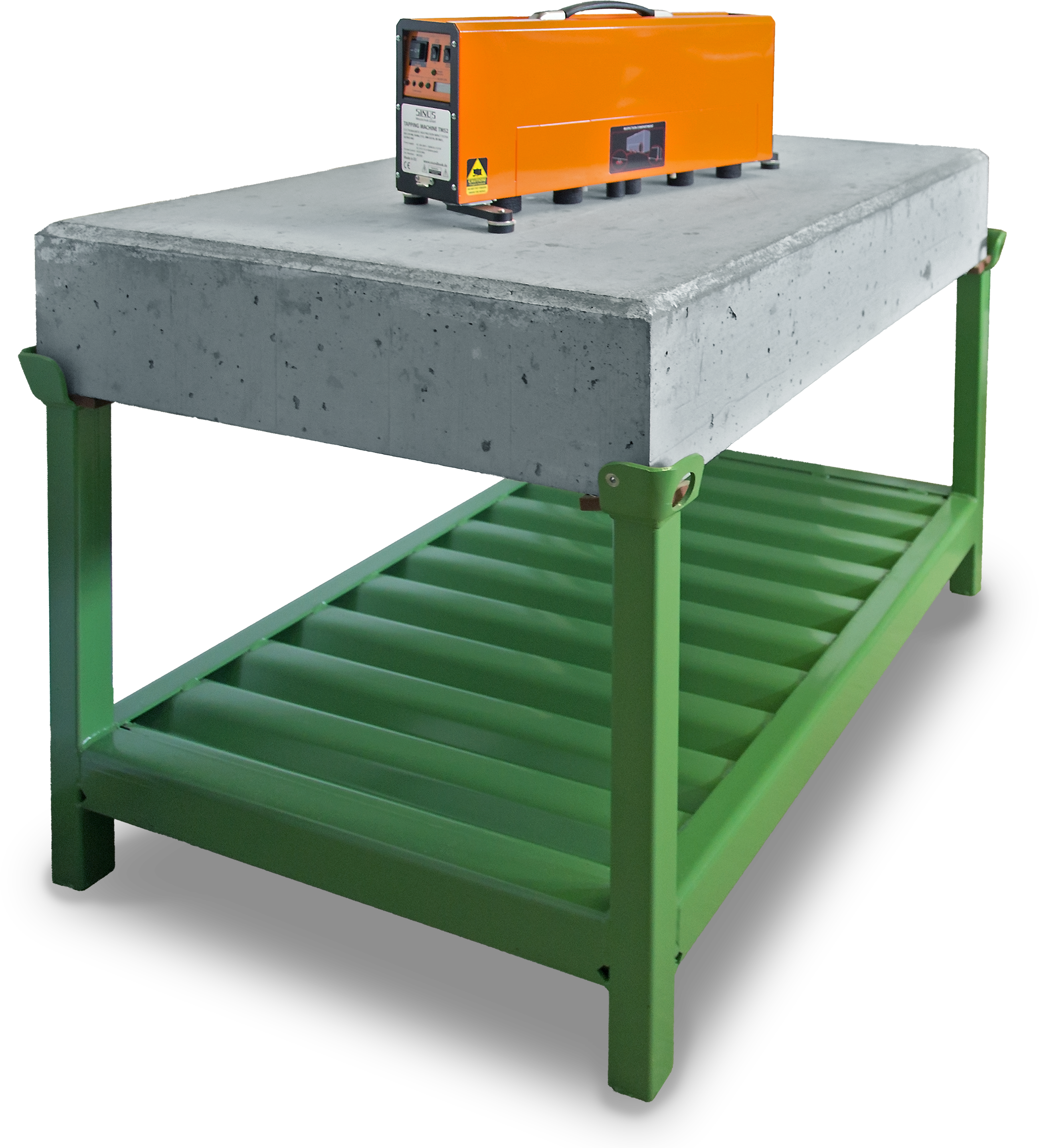Compact method to determine impact sound improvement level

Overview
Our COMET impact sound measuring station offers a compact method to determine the sound insulation improvement level according to DIN EN ISO 16251-1.
The acoustic properties of floor coverings are described with the sound insulation improvement level. Until now determination of the sound insulation improvement level required a building acoustical floor test stand, which consists of two rooms, one above the other, with a size of 50 m³ each.
Floor covering manufacturers are very interested in appropriate measurement facilities to ensure quality and develop new products. However, for the mostly small or medium businesses the effort using the test stand often is unreasonably high. To meet their needs the German PTB and the Forschungsinstitut für Leder und Kunststoffbahnen (FILK - German research institute for leather and plastic sheeting) developed a new compact method as part of an AiF project. This method replaces the two-room facility with a measuring station that has the size of a desk. As a result of the project the COMET sound insulation measuring station was created leveraging our measurement equipment in combination with a software specifically designed by us.
The measurement set-up consists of a 1.2m x 0.8m x 0.2m concrete slab which rests in a vibration-damped Euro-format steel rack. This compact set-up replaces the entire two-room facility. Similar to the standard-compliant two-room method the newly developed compact method also uses a standard sound insulation tapping machine for excitation. Two measurements are performed, one with and one without floor covering on the concrete slab. Instead of the sound pressure level in the receiving room the acceleration or velocity underneath the concrete slab is now measured. After that the difference between the average accelerations or velocities is evaluated according to DIN EN ISO 717-2. The results of both methods show only very slight deviations with respect to floor coverings with local elastic deformation as PVC, carpet or linoleum. Laminate flooring exhibits larger deviations, since it does not deform locally. In total the observed deviations are relatively minor compared to the uncertainties in building acoustics, which often reach values of several dB. With these very good result the project was concluded successfully. The compact measurement method has been submitted for introduction into standardization. The first floor covering manufacturers have already purchased the COMET sound insulation measuring station.
For further information please refer to the document PTB_COMET.pdf and the website of the federal test institute Physikalisch-Technische Bundesanstalt (PTB).
Apart from the COMET sound insulation measuring station, the TM50 standard sound insulation tapping machine is available. For quality certification the PTB tested the machine with different instruments.
TM50 standard sound insulation tapping machine
Standards
DIN EN ISO 717-2: Rating of sound insulation in buildings and of building elements - Part 2: Impact sound insulation
DIN EN ISO 16251-1: Laboratory measurement of the reduction of transmitted impact noise by floor coverings on a small floor mock-up
Technical specifications
Design of the measuring station
| Model | Standard concrete floor model (developed by the PTB) |
| Analyzer | Soundbook_MK2 |
| Software | SINUS COMET software |
| Sensors | 6x accelerometers |
| Excitation | Standard sound insulation tapping machine |
| Calibration | Vibration calibrator |
Specification
| Dimensions and weight | |
| Dimensions | 1240 mm x 840 mm x 1300mm (size of a European pallet) |
| Weight | 500 kg |
| Analyzer | |
| Accuracy class | IEC 61672-1 Class 1 |
| Octave filter | IEC 61260 filter of Class 0 |
| Resolution | 24 bit |
| Standard sound insulation tapping machine | |
| Requirements | ISO 10140-5 |
| Calibrator | |
| Requirements | ISO 16063 |
| Measuring range | |
| Frequency range | 50Hz - 5000Hz |


